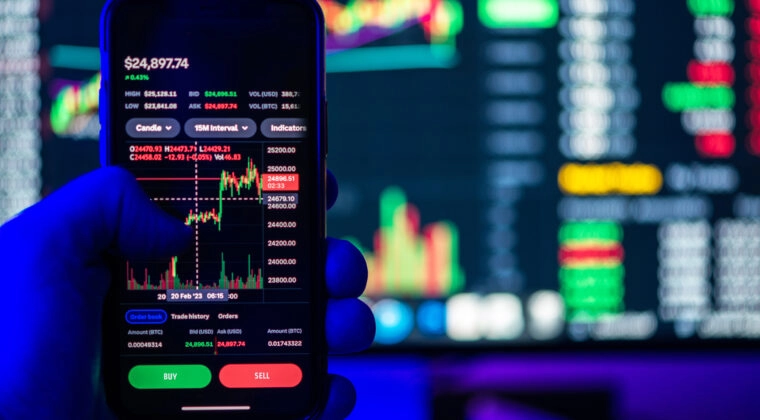-
- Trading Platforms
- PU Prime App
- MetaTrader 5
- MetaTrader 4
- PU Copy Trading
- Web Trader
- PU Social
-
- Trading Conditions
- Account Types
- Spreads, Costs & Swaps
- Deposits & Withdrawals
- Fee & Charges
- Trading Hours

In this ever-changing landscape of financial markets, copy trading and manual trading are two distinct approaches that stand out.
Both methods cater to a broad spectrum of traders with varied experience and risk appetite, each offering unique benefits and challenges.
In this article, we will delve into the intricacies of both methods, equipping you with the knowledge to make a more informed decision that aligns with your trading objectives.
Establishing a strong foundation of the concept is important before embarking on the journey of copy trading.
Copy Trading is a revolutionary concept that empowers individuals to replicate the trading strategies adopted by more seasoned and successful traders so that they can capitalise on their expertise.
These experienced traders are known as signal providers, who have their trades replicated automatically and in real time with the help of technology on their selected copy trading platform.
The other main party in copy trading is the copiers. Copiers mimic the trades of signal providers and, when they make a profit, pay a predetermined share of the profits to their signal providers.
Understanding how copy trading works and what benefits it entails is crucial for anyone looking to enter copy trading.
On the other hand, manual trading involves making independent trading judgments through personal analysis, research, and market insights. Traders who are looking for more control and involvement might find this hands-on approach appealing for its own set of advantages:
In manual trading, you can make decisions in real time by using your analysis, risk tolerance, and market forecast as guides.
You can have complete control over every aspect of your trades, which allows you to implement risk management strategies more effectively, as you can see clearly when you need them.
Another benefit of manual trading is that it allows you to customise your trading strategies, risk management methods, and trading style according to your trading objectives and risk tolerance level.
Whether you are aiming for long-term growth, short-term gains, or capital preservation, you can always customise your trading strategy to meet your needs.
Customisation could also allow you to tailor your trading strategies according to a specific financial asset you are interested in and use your knowledge in that area.
As you would need to decide on the next moves in trading by yourself, this means that you might spend more time researching the latest market events and trends that could potentially impact your trades’ performance.
As a result, you might gain a deeper understanding of market trends and fundamental factors that drive the prices of various financial assets.
Last but not least, the financial markets are dynamic, and things can shift rapidly. Prices, volatility, and trends can alter according to multiple factors, and adaptability means that traders are able to respond effectively.
Manual trading can provide profitable trading opportunities, as it enables traders to adapt quickly to shifting market conditions and unexpected news events.

Copy trading and manual trading are two distinct approaches to the financial markets, each with its strategic considerations.
Here are some ways to compare the two trading methods to find one that meets your needs and trading objectives.
Both copy trading and manual trading require strong risk management strategies to safeguard your investments.
However, on a copy trading platform, you could seek diversification to manage trading risks, whereas manual trading allows immediate adjustments based on market changes.
While manual trading necessitates a more thorough comprehension of trading strategies and principles, beginner traders could seek a gentler learning curve on a copy trading platform.
If you are a beginner looking to embark on the world of trading, consider going for copy trading, as you could gain some exposure and learn a thing or two from seasoned traders before starting your trades. Check out some beginner copy trading tips that you might find helpful below.
Time Commitment
Because copy trading requires less time to analyse the market, it is a good option for people with hectic schedules. Research and implementation take longer when trading manually.
Which option to choose—manual trading or copy trading—depends on your level of commitment, goals, and personal preferences.
Each method has advantages and can be used in a comprehensive trading plan.
Whether you choose the practicality of copy trading or the active involvement of manual trading, the secret to reaching your financial goals is to follow a methodical process.

Trade forex, indices, metal, and more at industry-low spreads and lightning-fast execution.
Sign up for a PU Prime Live Account with our hassle-free process.
Effortlessly fund your account with a wide range of channels and accepted currencies.
Access hundreds of instruments under market-leading trading conditions.

Please note the Website is intended for individuals residing in jurisdictions where accessing the Website is permitted by law.
Please note that PU Prime and its affiliated entities are neither established nor operating in your home jurisdiction.
By clicking the "Acknowledge" button, you confirm that you are entering this website solely based on your initiative and not as a result of any specific marketing outreach. You wish to obtain information from this website which is provided on reverse solicitation in accordance with the laws of your home jurisdiction.
Thank You for Your Acknowledgement!
Ten en cuenta que el sitio web está destinado a personas que residen en jurisdicciones donde el acceso al sitio web está permitido por la ley.
Ten en cuenta que PU Prime y sus entidades afiliadas no están establecidas ni operan en tu jurisdicción de origen.
Al hacer clic en el botón "Aceptar", confirmas que estás ingresando a este sitio web por tu propia iniciativa y no como resultado de ningún esfuerzo de marketing específico. Deseas obtener información de este sitio web que se proporciona mediante solicitud inversa de acuerdo con las leyes de tu jurisdicción de origen.
Thank You for Your Acknowledgement!